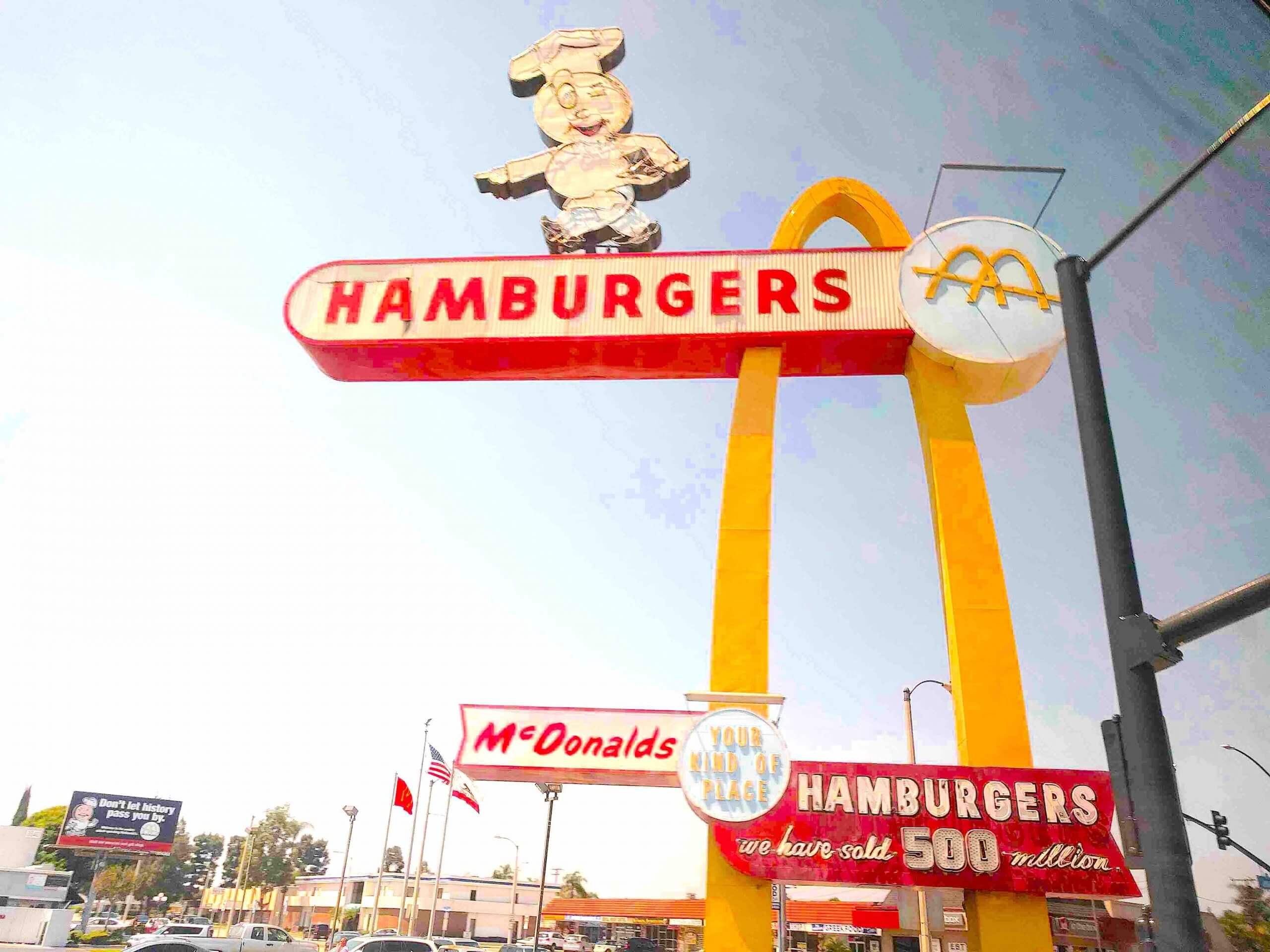661 Imperial
Los Angeles 90021
South L.A. Road Trip: Hot Rods, Adobes, Googie & Aerospace
This provocative Esotouric sightseeing tour begins Downtown and works its way south through Maywood, Bell Gardens, and Downey, exploring off-the-beaten-path landmarks that have had enormous influence on the cultural life of Southern California and the world beyond.
Turning the predictable idea of a Los Angeles architecture tour on its head, this excursion goes into areas not traditionally associated with the important, beautiful or significant, raising issues of preservation, adaptive reuse and urban planning. The locations all speak to the power, mutability and reach of Southern California as a creative engine.
Some of the tour stops are:
Canning Hardware and the Ed “Big Daddy” Roth studio
In the 1950s, this modest stretch of Slauson Avenue was ground zero for Southern California high performance and hot rod culture. Here we’ll show how aerospace, social mobility and teenage ingenuity transformed the automotive industry and created new modes of self-expression that would have an international influence.
Casa de Rancho San Antonio / Henry Gage Mansion
One of the oldest adobe structures in Los Angeles County (built c.1840), this Bell Gardens landmark was built by the Lugo family, whose land holdings spread into the city of South Gate, named for the property’s southern border. This fascinating residence on the banks of the Rio Hondo River is now entirely surrounded by a mid-century trailer park. Between the layers of historical context are revealed the history of local migration and population growth, from Spanish land grants to the dust bowl to the vast waves of subdivided suburbs. From a public space outside the property, tour host Richard Schave will share the strange tale of the seldom seen mansion, and his years-long efforts to make this California landmark accessible to the public.
McDonald’s Franchise #2, Downey
The platonic ideal of a Google-style roadside hamburger stand and the oldest McDonald’s franchise still standing, this National Register landmark sports several unique features: integrated golden arches framing Stanley Meston’s classic walk-up restaurant design, an enormous neon Speedee character sign, and deep fried apple pie still available for your noshing pleasure. The story of why there is a McDonald’s on this particular corner and how it still looks so cool will amaze you.
Downey High School & Carpenters Apartments
A musical interlude to highlight the hit parading pride of Downey, Richard & Karen Carpenter of The Carpenters and their deep community roots. Growing up steeped in the space race that was run in their backyard, they’ll go on to produce one of the greatest UFO-themed singles ever, “Calling Occupants of Interplanetary Craft,” and invest in a charming set of 1970s multi-family real estate still decorated with pop star branding.
Columbia Memorial Space Center
Recently erected on the edge of the former Downey Space Plant facility, an aerospace landmark that was demolished for redevelopment as a mall, this museum and gift shop serves as a base for understanding the vast infrastructure and industry that was the engine that powered the space race, and radically transformed Southern California culture.
Harvey’s Broiler, Downey
Harvey’s was a glowing stop on the mid-century South Los Angeles teenage car cruising circuit, its international influence on fashion, design and pop culture immortalized by Tom Wolfe in his essay “The Hair Boys.” That would be enough to grant Harvey’s a spot on this tour. But Harvey’s is also a landmark of historic preservation activism. After a section of the beloved drive-in was illegally demolished by a tenant, the community demanded it be rebuilt exactly as it had been, holding their elected officials accountable to ensure that happened. Today, it’s a Bob’s Big Boy restaurant, still a favorite stop for cruisers, families and preservation people who need a little boost in the throes of a tough campaign. If Harvey’s can come back, so can _.
Housing of Medical Emergencies (H.O.M.E.) facility at Rancho Los Amigos Southern Campus / Los Angeles County Poor Farm
This enormous compound was originally known as the Los Angeles County Poor Farm, established in 1888 as a rehabilitation facility providing work, housing and medical care for the indigent. The period of greatest construction was the 1920s, with notable structures in the Spanish Colonial Revival style. The now-vacant historic buildings are unfortunately popular with trespassing “urban explorers” and ghost hunters, which may explain several recent major fires. The south side of the old campus is slated for redevelopment, a project which is expected to include the preservation and adaptive reuse of some of the historic structures. In the midst of the southern campus, The Assistance League of Downey in 1997 established the Housing of Medical Emergencies (H.O.M.E.) facility, a 10-unit apartment complex which provides temporary, low-cost housing to families who have loved ones rehabilitating at the adjacent Rancho Los Amigos National Rehabilitation Center, on what was the north side of the Poor Farm. During this stop, we will pay a visit to H.O.M.E. and enjoy perimeter views of the remaining historic structures on the southern campus of the old Poor Farm.
This tour is just one of Esotouric’s California Culture tour series (formerly known as the Reyner Banham Loves L.A. series).
